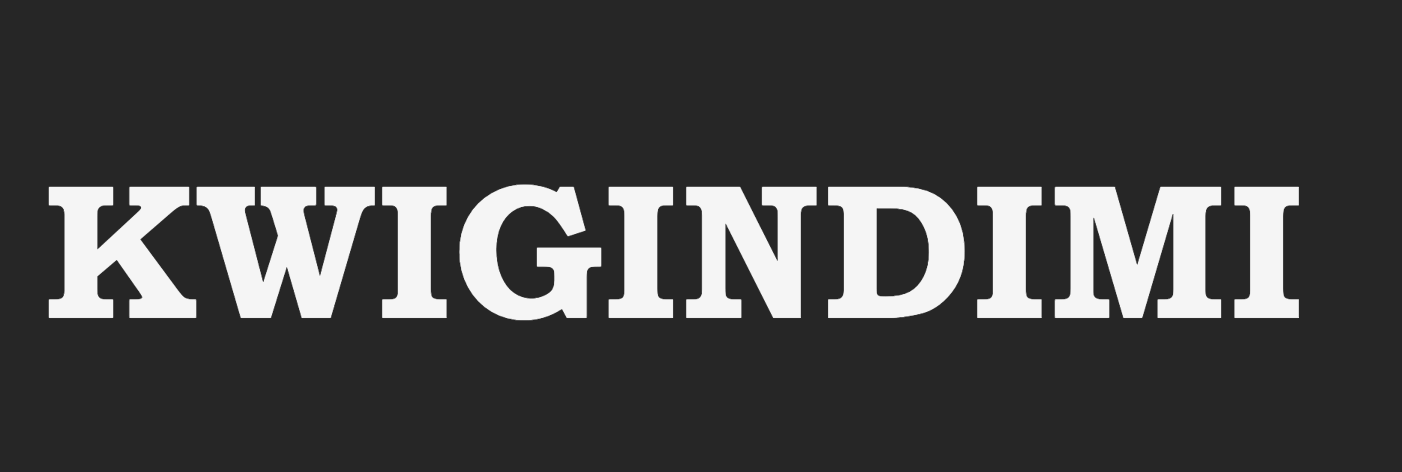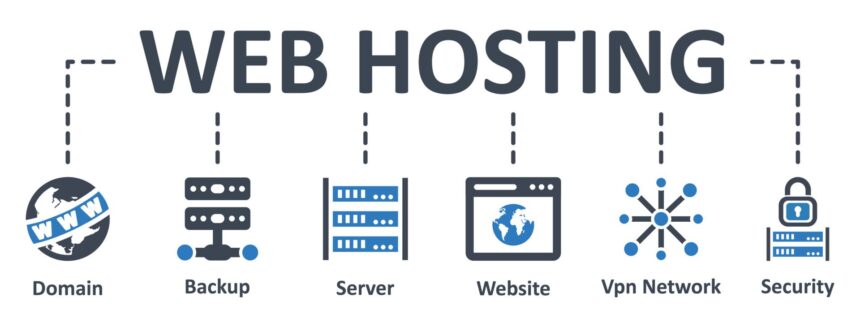Introduction
In an era where a strong online presence can make or break a business, selecting the right web hosting service is a critical decision. As we move deeper into 2025, web hosting providers have evolved to offer increasingly sophisticated features, from ultra-fast SSD storage and edge caching to AI-driven security tools and managed WordPress solutions.
Whether you’re launching a personal blog, scaling an e-commerce empire, or supporting a mission-critical enterprise application, the performance, reliability, and support capabilities of your hosting partner will directly impact user experience, search engine rankings, and ultimately, your bottom line. This comprehensive guide examines the ten best web hosting services for 2025, breaking down their strengths and weaknesses to help you make an informed decision tailored to your specific needs.
Why Choosing the Right Web Host Matters in 2025
The digital landscape of 2025 is characterized by heightened user expectations, stringent data privacy regulations, and the relentless pace of technological innovation. Website visitors demand near-instantaneous load times, mobile-optimized interfaces, and rock-solid security. Search engines like Google now factor Core Web Vitals metrics such as Largest Contentful Paint (LCP) and First Input Delay (FID) into ranking algorithms, meaning hosting performance directly affects SEO. Meanwhile, compliance with regulations such as GDPR in Europe and emerging data protection laws worldwide adds new layers of complexity.
An unreliable host can result in downtime, lost revenue, and damage to brand reputation, while subpar security can expose you to data breaches and costly penalties. On the other hand, a top-tier hosting service can deliver blazing-fast page loads, automatic backups, SSL certificates, and expert support, empowering you to focus on content creation, marketing, and growth strategies rather than server maintenance.
Key Factors to Consider When Choosing a Web Hosting Service
Selecting the optimal web hosting provider requires balancing multiple factors. Uptime guarantees, typically expressed as a percentage (e.g., 99.9%), indicate the provider’s commitment to keeping your site online. Even a small difference 99.9% versus 99.99% can translate to hours of downtime over a year. Equally important is server performance: SSD storage, content delivery network (CDN) integration, and HTTP/3 support can significantly reduce latency and improve user experience. Scalability ensures that as your traffic grows, your hosting plan can seamlessly accommodate surges without expensive migrations.
Security features such as free SSL certificates, malware scanning, and DDoS protection safeguard your data and user trust. Managed versus unmanaged hosting represents another decision point: beginners may favor managed services that handle server updates and software patches, while experienced developers often appreciate the flexibility of root access offered by unmanaged VPS or dedicated servers.
Pricing structures vary widely. Shared hosting is the most budget-friendly but can suffer from “noisy neighbor” issues and limited resources. VPS (Virtual Private Server) hosting strikes a balance between cost and performance, offering dedicated CPU and memory allocations. Cloud hosting, with its on-demand resource scaling, appeals to projects with unpredictable traffic patterns.
Dedicated servers provide maximum control at a premium price. Finally, customer support quality from 24/7 live chat to phone support and ticketing systems can make a crucial difference when you encounter technical challenges. Response time, technical expertise, and availability across time zones are key metrics to evaluate.
Top 10 Web Hosting Services for 2025
1. Bluehost
Bluehost has long been a household name in the web hosting space, particularly favored by WordPress users. In 2025, Bluehost continues to enhance its offerings with advanced performance features such as NVMe storage and global CDN integration. Its shared hosting plans remain competitively priced, starting at under $3 per month for introductory terms, while VPS and dedicated options are available for users requiring more robust resources.
Bluehost’s custom control panel simplifies site management for beginners, enabling one-click installations of popular applications. For WordPress enthusiasts, managed WordPress hosting includes automatic core and plugin updates, daily backups, and staging environments. Bluehost also provides a free domain for the first year, free SSL certificates, and marketing credits for Google Ads and Microsoft Advertising features designed to boost your online visibility from day one.
Performance benchmarks for Bluehost in third-party tests show average Time to First Byte (TTFB) under 200 ms in North America and Europe, though speeds can vary in Asia-Pacific regions. Uptime is backed by a 99.99% guarantee, with automatic failover processes to minimize disruptions. Customer support is accessible via chat and phone 24/7, with knowledgeable WordPress specialists on hand.
Bluehost excels for small businesses, bloggers, and entry-level e-commerce sites seeking an all-in-one solution backed by a reputable brand. While there are occasional reports of price increases upon renewal, the overall value especially for WordPress users remains strong as we head into 2025.
2. SiteGround
SiteGround has carved out a reputation for exceptional performance and customer service, earning consistent praise in industry reviews. In 2025, SiteGround’s platform leverages Google Cloud infrastructure with integrated SuperCacher technology, effectively optimizing PHP processing and database queries for high-speed delivery. Shared hosting plans start at around $4 per month, while cloud hosting options provide flexible resource allocation with pay-as-you-go billing.
Key features include automated daily backups, free CDN via Cloudflare, and an intuitive interface built on cPanel with Site Tools enhancements. SiteGround’s managed WordPress hosting offers image optimization, a proprietary AI anti-bot system, and integrated Git repositories, attracting developers seeking streamlined workflows.
Performance tests place SiteGround near the top of the charts, with average load times of under one second globally. The company’s 99.99% uptime commitment is supported by redundant data centers in strategic locations across North America, Europe, and Asia.
SiteGround’s customer support is available 24/7 through chat, ticket, and phone, with an average response time under five minutes. Its knowledgeable staff and proactive security measures make it a strong choice for growing businesses, agencies, and mission-critical sites prioritizing performance and reliability.
3. HostGator
HostGator remains one of the most recognizable hosting brands, appealing to both beginners and seasoned developers. In 2025, HostGator’s Hatchling and Baby shared hosting plans start at approximately $2.75 per month, offering unmetered bandwidth, free SSL, and a user-friendly cPanel interface. For larger projects, the provider’s VPS and dedicated offerings deliver scalable CPU, RAM, and storage configurations.
Recent enhancements include optimized WordPress hosting with staging environments, automatic plugin updates, and integrated caching. HostGator now offers a proprietary website builder with mobile-responsive templates, catering to users seeking an all-in-one website creation platform.
Speed tests indicate that HostGator performs well in North America, achieving sub-500 ms load times for standard WordPress installations. However, performance in other regions may rely heavily on third-party CDN integration. HostGator’s SLA guarantees 99.9% uptime, with credit-based compensation for excessive downtime incidents.
Support is available round-the-clock via live chat and phone, with ticketed support for more complex issues. While HostGator’s support quality is generally solid, peak-hour wait times may be longer compared to premium hosts. HostGator is ideal for budget-conscious bloggers, small business websites, and first-time site owners seeking a straightforward hosting experience without a steep learning curve.
4. A2 Hosting
A2 Hosting has positioned itself as a speed-centric provider, aiming to deliver “Turbo” performance through LiteSpeed servers and NVMe storage. In 2025, A2’s Turbo Boost and Turbo Max plans promise up to 20× faster page loads compared to standard shared hosting. Introductory pricing starts at around $3 per month, with renewal rates higher, but still competitive for the performance delivered.
A2 Hosting supports a variety of platforms WordPress, Drupal, Joomla as well as developer-friendly environments including Python, Node.js, and Ruby on Rails. The proprietary control panel allows easy server management, while SSH access and Git integration cater to advanced users.
Independent benchmarking shows A2 Hosting achieving average load times under 300 ms in key markets, with 99.99% uptime reliability. Free features include SSL certificates, automatic backups, and a global CDN though some CDN features may require manual configuration.
Customer support, branded as “Guru Crew,” is available 24/7 via chat, phone, and tickets. Support staff are known for technical knowledge and hands-on troubleshooting. A2 Hosting’s focus on speed and developer flexibility makes it a strong contender for performance-critical sites and web applications demanding low-latency responses.
5. DreamHost
DreamHost stands out for its commitment to transparency and user privacy, offering a 97-day money-back guarantee the longest in the industry. Shared hosting plans start at $2.95 per month, including free domain privacy, unlimited bandwidth, and SSD storage. DreamHost’s managed WordPress service, DreamPress, provides automatic scaling, built-in caching, and daily backups starting at $16.95 per month.
Built on DreamHost’s proprietary control panel rather than cPanel, the user interface emphasizes simplicity and streamlined workflows. For developers, DreamHost supports Git, WP-CLI, SSH, and custom cron jobs. The company also offers VPS and cloud hosting options with hourly billing for granular cost control.
Performance metrics reveal average site load times around 500–600 ms for standard WordPress installations, with uptime consistently above 99.95%. DreamHost’s SSD-based infrastructure and isolated PHP workers contribute to performance stability under traffic spikes.
Support channels include 24/7 live chat for DreamPress customers, and ticket-based email support for shared hosting users. While response times for ticket support may average several hours, the quality of assistance is generally high. DreamHost is an excellent choice for privacy-focused users, bloggers, and developers seeking flexible, transparent hosting plans.
6. WP Engine
WP Engine specializes exclusively in managed WordPress hosting, catering to clients who demand enterprise-grade performance and support. In 2025, WP Engine’s Digital plan starts at $30 per month for up to 25,000 visits, while Growth and Scale plans accommodate higher traffic volumes and include additional features such as GeoTargeting and Content Performance analytics.
Built on the Google Cloud Platform, WP Engine delivers global edge networks, EverCache technology, and automatic SSL provisioning. The platform includes one-click staging, developer tools like SSH Gateway and Git integration, and automated daily backups. WP Engine’s proprietary CDN and performance monitoring tools help maintain optimal site speed and reliability.
Benchmarks demonstrate WP Engine achieving sub-200 ms server response times worldwide, with 99.99% uptime guaranteed. Industry analysts consistently rank WP Engine among the fastest managed WordPress hosts, particularly for complex, plugin-heavy sites.
Customer support is available 24/7 via live chat and phone, with technical experts dedicated to WordPress. For enterprise clients, WP Engine offers account managers and architectural reviews. High pricing makes WP Engine best suited for established businesses, high-traffic blogs, and e-commerce sites where performance and expert support justify the investment.
7. Kinsta
Kinsta has emerged as a major player in the managed WordPress hosting arena, known for its premium performance and developer-centric tooling. Powered by the Google Cloud Platform’s C2 machines, Kinsta delivers isolated container architecture for each site, ensuring consistent resource availability. Pricing starts at $35 per month for one site and 25,000 visits, with scalable plans for growing businesses.
Kinsta’s dashboard offers site cloning, automatic daily backups, and performance analytics. Integrated Application Performance Monitoring (APM) provides insights into slow database queries and PHP functions, enabling targeted optimizations. Free external monitoring, SSL, and CDN via KeyCDN are included.
Performance tests show Kinsta achieving average load times around 150–250 ms, with 99.9% uptime backed by a multi-cloud infrastructure spanning 35 global data centers. Kinsta’s focus on speed and reliability places it among the top choices for high-traffic WordPress sites.
Support is provided through chat-based ticketing, with engineers available 24/7. Kinsta’s team is praised for rapid responses and deep technical expertise. The platform suits agencies, developers, and enterprises seeking a robust, performance-oriented WordPress environment with advanced analytics and monitoring capabilities.
8. Hostinger
Hostinger has built its reputation on affordability without compromising essential features. Shared hosting plans begin as low as $1.49 per month, making Hostinger one of the most budget-friendly options on the market. Despite the low entry point, Hostinger offers LiteSpeed caching, free SSL, and a custom hPanel interface.
Hostinger’s WordPress plans include optimized WordPress hosting with automatic updates, one-click staging, and a global CDN powered by Cloudflare. VPS plans start at $3.95 per month, providing dedicated CPU cores, RAM, and SSD storage at a competitive price.
Speed tests indicate Hostinger delivering load times under 400 ms in North America and Europe, though performance may dip in other regions without additional CDN layers. Uptime is guaranteed at 99.9%, and Hostinger provides 24/7 live chat support.
Hostinger is ideal for hobbyists, startups, and small businesses with tight budgets that still require solid performance and core features. While advanced developers may find the platform’s custom control panel limiting, its value proposition remains compelling for cost-conscious users.
9. InMotion Hosting
InMotion Hosting is known for its balanced offerings, delivering reliable performance with strong customer support. Shared hosting plans start at $2.49 per month, including free SSL, domain, and SSD storage. InMotion’s VPS plans offer root access and choice of data center location in the U.S.
Managed WordPress hosting, branded as WP-1000S and up, begins at $14.99 per month, offering free automatic backups, site staging, and pre-installed BoldGrid site builder. InMotion also provides dedicated server plans with enterprise-grade hardware and DDoS protection.
Performance metrics place InMotion under 500 ms load times for standard WordPress sites and 99.95% uptime. The company’s Max Speed Zones infrastructure, featuring data centers on both U.S. coasts, helps reduce latency for domestic audiences.
Customer support includes 24/7 live chat, phone, and email, with an average response time under 15 minutes. InMotion’s excellent support reputation and balanced pricing make it a solid choice for U.S.-focused businesses seeking reliable, managed hosting.
10. GoDaddy
GoDaddy is one of the largest domain registrars and hosting providers, offering a broad suite of services from shared hosting to dedicated servers. In 2025, GoDaddy’s Economy shared plan starts at $5.99 per month, including 100 GB storage, free SSL for the first year, and one-click installs via cPanel.
GoDaddy’s managed WordPress plans include malware removal, daily backups, and performance monitoring. The provider has invested in optimizing its infrastructure, though independent tests often rank GoDaddy’s speeds slightly below specialized hosts.
GoDaddy guarantees 99.9% uptime and provides 24/7 phone and live chat support. GoDaddy’s global data centers ensure reasonable performance worldwide, though power users may prefer hosts with more developer-friendly features.
GoDaddy is well suited for users seeking a one-stop shop for domains, email, and hosting, particularly small businesses and entrepreneurs who value convenience and integrated services.
Emerging Trends in Web Hosting for 2025
The web hosting industry is rapidly evolving in response to emerging technologies and shifting user demands. In 2025, AI-driven optimization is becoming mainstream, with hosts employing machine learning to auto-tune server configurations and detect anomalous traffic patterns. Edge computing integration, where static assets and even dynamic content are served from edge nodes, reduces latency for global audiences. Green hosting, powered by renewable energy and carbon-offset initiatives, is also gaining traction as companies and consumers prioritize environmental sustainability. Serverless hosting platforms, which abstract away server management entirely, are on the rise—ideal for event-driven applications and microservices architectures. Meanwhile, the convergence of hosting and security services, offering integrated Web Application Firewalls (WAF) and zero-trust network access, underscores the industry’s shift toward holistic, managed platforms that empower users to scale with confidence and minimal operational overhead.
How to Choose the Best Option for Your Needs
With so many excellent hosting options available, the best choice hinges on your specific requirements. If you’re a beginner launching a simple website or blog, shared hosting from providers like Bluehost or HostGator offers an easy, affordable entry point. For WordPress users prioritizing speed and managed services, WP Engine, Kinsta, and SiteGround stand out for their advanced caching, staging environments, and expert support.
Developers and agencies requiring granular control may gravitate toward A2 Hosting’s performance-tuned environments or VPS offerings from InMotion Hosting. Budget-conscious entrepreneurs will find Hostinger’s low-cost plans compelling, while DreamHost appeals to privacy-focused users seeking transparency and extended money-back guarantees. For high-traffic enterprise applications, consider dedicated or cloud hosting solutions from Bluehost’s VPS tier or WP Engine’s enterprise plans.
Always assess your projected traffic, technical expertise, budget, and performance needs before committing to a multi-year term, and take advantage of trial periods and money-back guarantees to test performance under real-world conditions.
Conclusion
Navigating the web hosting landscape in 2025 requires careful consideration of performance, scalability, security, and support. The ten providers profiled in this guide each offer unique strengths tailored to different use cases, from budget-friendly shared plans to enterprise-grade managed solutions. By evaluating your project’s specific needs whether it’s a personal blog, a high-traffic e-commerce site, or a resource-intensive web application you can select a hosting service that delivers the reliability and speed necessary for success.
Armed with the insights in this guide, you’re well-equipped to make an informed decision and launch your website on a stable, high-performance foundation that will serve your audience effectively throughout 2025 and beyond.




